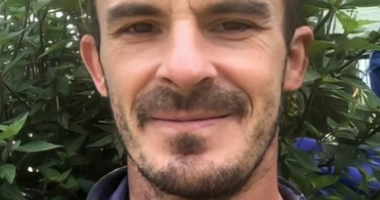Share this @internewscast.com

Israel, meanwhile, relies on both subterfuge and robust regular ground and air forces that are apparently unmatched in the region.
Though roughly equal in the number of troops, the two militaries bring strikingly different tactics and firepower.
On paper, Iran would seem to have an advantage in numbers, with 88 million people and a land area of 1.6 million square kilometres compared to Israel’s nine million people and 22,000 square kilometres.
Militarily, however, those numbers mean little.
Iran’s troops are divided between the regular armed forces, generally commissioned with guarding Iran’s borders and carrying out more conventional military tasks, and the paramilitary Revolutionary Guard, including the elite Quds Force, the strategic missile command and the cyberforce.
The regular forces command the bulk of the troops, around 600,000 men, and standard equipment, while the Revolutionary Guard has about 200,000 personnel split between various divisions.
Along with Iran’s proxies, its conventional forces are believed to have been heavily degraded by Israeli and US military operations over the past year.

Iran’s military equipment is a hodge-podge, including some provided by the Soviet Union and others by the US prior to the 1979 Islamic Revolution, along with more recent Russian additions.
With an estimated 350 antiquated planes in its air force, it lags far behind Israel in both quantity and quality.
Iran, however, does have the ability to produce a wide range of UAV’s and similar equipment, typified by the Shahed attack drones it has sold to Russia in large numbers for use in the war in Ukraine.
The security of its top commanders has been a recurring problem from Iran, with the head of the Revolutionary Guards General Hossein Salami and General Mohammad Bagheri, the chief of staff of Iran’s armed forces, among those who killed in Friday’s strikes in Tehran.
Top nuclear scientists were also killed.
Other senior commanders have been killed in recent strikes around the region.
Iran’s nuclear program has advanced in recent years, and it is believed to have developed enough uranium enriched to near-weapons grade levels to produce multiple nuclear weapons in a matter of months if it took the decision to do so.
But Iran would need even more time to develop a missile or other means of weaponising them. Israel does not appear inclined to take that chance, however, having already struck facilities manufacturing nuclear material and ballistic missiles.
Israel’s formidable land, sea and air forces are derived from both the latest US and European technology as well as a robust domestic defence industry that can design, build and sustain a full range of armaments, allowing it to take on opponents on multiple fronts at the same time.
For a small nation, it also has a considerable supply of troops, with about 170,000 active duty forces and another 400,000 reserves.
Though fewer than Iran’s, Israel’s forces have been battle-hardened by regional conflicts.
One option for Iran’s counterstrike may include hundreds of ballistic missiles targeting Israel, though how long that could be sustained is unclear.

In October 2024, a massive Iranian missile assault on Israel caused only limited damage, partly because of US help in shooting down Iranian missiles.
That defence was made possible by Israel’s multi-tiered missile defences.
The sophisticated system, developed over decades with considerable US support, is capable of detecting incoming fire and deploying only if the projectile is headed toward a population centre or sensitive military or civilian infrastructure. Israeli leaders say the system isn’t 100 per cent guaranteed, but credit it with preventing serious damage and countless casualties.
Israel is widely believed to be the only nuclear-armed state in the Middle East, though it has never acknowledged having such weapons.
Israel also has a steadfast ally in the United States, which has been key in previous conflicts and will likely be crucial in any that follow.
The United States has distanced itself from the Israeli actions but could be a target of Iranian retaliation.
Among the US assets in the region are an aircraft carrier with about 60 fighters in the Arabian Sea, along with dozens of other jets at bases throughout the region â as well as thousands of troops.
US Secretary of State Marco Rubio said that Israel took “unilateral action against Iran,” warning Iran not to target US forces in retaliation.

In recent days, the US began pulling some diplomats from Iraq’s capital and offering voluntary evacuations for the families of US troops in the wider Middle East.
Israel already curtailed Iran’s ability to fight back, having decimated Iranian proxies Hamas and Lebanon’s Hezbollah and heavily bombed Iran’s air defence systems.
Ahead of Friday’s strikes, Iran had vowed massive retaliation for any attack, not just against Israel but also US bases in the region, with one official vowing to effectively drive the US from the Middle East through the destruction of its military infrastructure.














